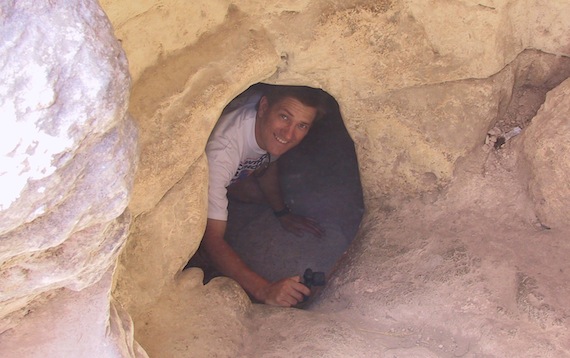
When you think of ancient Israel, it’s likely you don’t think of caves. And yet, the country has literally thousands of them that have played a role in history. They’re still there.
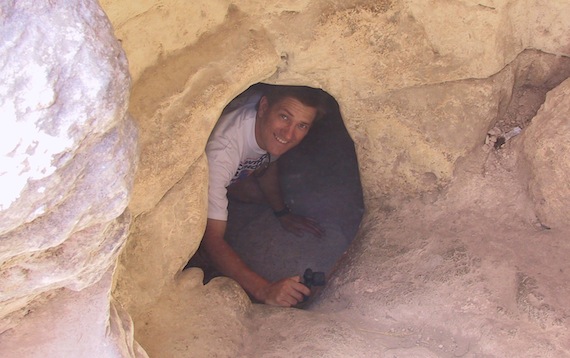
(Photo: Exploring the Caves in Bet Guvrin-Maresha National Park. Photo by James Foo)
From the caves in Mount Arbel, to those that provide sheepfolds in Bethlehem, to the Qumran caves that preserved the Hebrew text, the land is honeycombed with caves.
One area particularly filled with caves is the Shephelah, the low rolling foothills that slope down between the Hill Country of Judea and the Philistine plain. Not all of these subterranean labyrinths allow for spelunking visitors. But let’s look at two that do.
One of these caves men made thousands of years ago.
Another one God made over thousands of years.
Bet Guvrin Bell Caves
The ancient stomping grounds of the Prophet Micah, the Guvrin Valley lays rich with archaeological finds, including a Roman amphitheater, a Roman and Byzantine public building and bathhouse, and a Crusader church, fortress, and moat.
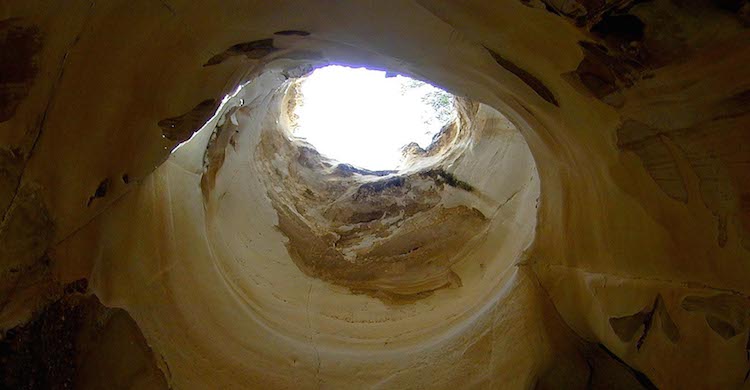
(Photo: Bet Guvrin bell cave entrance. Courtesy of the Pictorial Library of Bible Lands)
The Guvrin Valley has a hard, nari crust on it surface—as does most of the Shephelah—and as a result, the area surrounding Maresha is honeycombed with caves. These subterranean caverns include:
- Numerous tombs
- Cellars from Idumean homes
- Dovecotes
But the most interesting manmade caves are the “Bell Caves,” so called because of their shape. Below the nari crust quarrymen removed chalk in layers, broadening the walls of the cave as they dug deeper.
Listen to the University of Utah Singers perform the Alleluia from “Sing a New Song” by Ronald Staheli, in the Bell Caves of Bet Guvrin.
Modern visitors with hard hats can walk through these caves illumined by the sunlight that penetrates the surface holes. The ancient quarry marks still show on the cave walls.
Stalactite Cave / Nahal Sorek
Below the Sorek Valley where Samson once roamed, a treasure lay hidden from human eyes for thousands of years. God was at work.
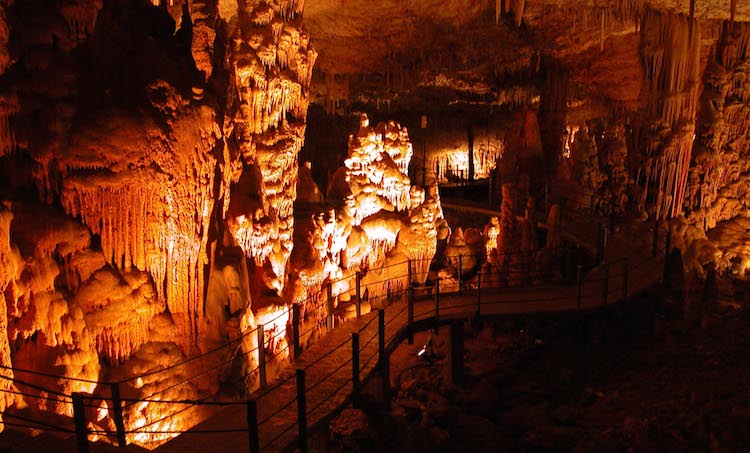
(Photo: Stalactite Cave above the Sorek Valley. Courtesy of the Pictorial Library of Bible Lands)
In 1968, blasting at the Hartuv quarry near the city of Beth Shemesh revealed a cave full of stalactites and stalagmites. Rainwater dripping for millennia into this cave slowly dissolved the limestone into beautiful formations—some of which are still growing.
- Visitors can walked planked pathways and stairs down through the 45-acre cavern to enjoy stunning rock formations with dramatic lighting.
- A constant temperature of 72 degrees Fahrenheit keeps the cave comfortable year-round.
One cave manmade; another God-made. It’s hard to believe such beauty lay below the surface for so long.
Tell me what you think: Which cave would you like to see—or have you seen? To leave a comment, just click here.
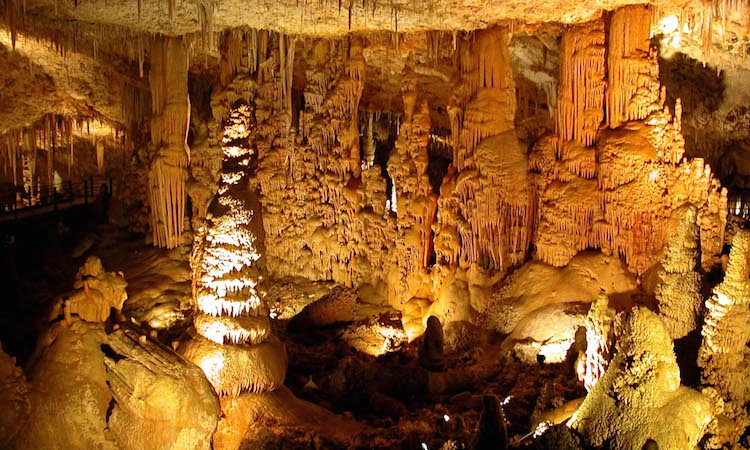
(Photo: Stalactite Cave above the Sorek Valley. Courtesy of the Pictorial Library of Bible Lands)
You’ll find these sites and more in a book I wrote for the Israel Ministry of Tourism, 100 Off-The-Beaten-Path Sites. You can download a free copy.
Click here to leave a comment.
-1.png?width=5230&height=1198&name=unnamed%20(4)-1.png)

.jpg?width=350&name=Wayne-books-350wide%20(1).jpg)




